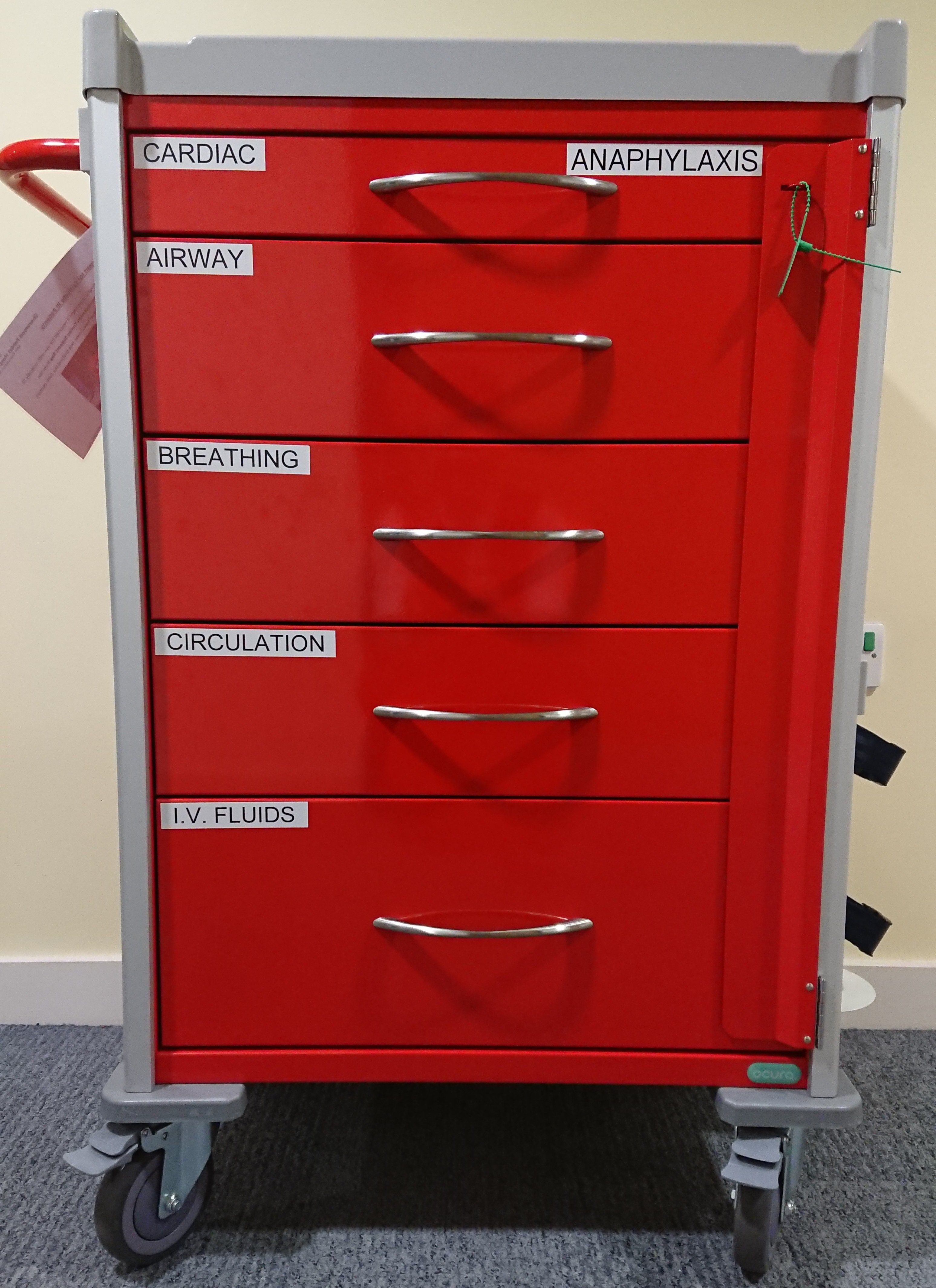The main issue identified was that the boxes were small and contained only bare essential kit for managing cardiac arrest. This meant many areas stocked and managed their own resuscitation trollies; tying up the time of clinical staff for stocking and checking and leading to increased cost.
The core aim of the project was to improve equipment availability to encompass the needs of most cardiac arrest events and support the management of deteriorating patients and other clinical emergencies whilst at the same time maintaining the principle of have a centrally stocked, quality controlled, sealed equipment system.
What came into being is a wheeled, 5 drawer, sealed resuscitation trolley which was rolled out across our 3 hospital sites during August and September 2015.
These are stocked centrally by MEMD, quality control checked and then sealed with a green snap tag and dated; meaning that every trolley has the same contents and layout and there is no need for stocking or checking of individual items by ward or department staff.
Daily checks are simply; is the seal intact? is the trolley in date?
The seal is broken at the point of use and equipment used as required.
After use a fresh trolley is collected from the dedicated backup point for that hospital site, the used trolley is sealed with a red tie tag, returned to the backup point and the usage reported to MEMD using their 24 hour voicemail service.
This reporting and monitoring system also allows MEMD to track expiry dates of equipment within the system; allowing equipment approaching expiry to be exchanged out of trollies and stock rotation to be undertaken to reduce wastage.
We have had fantastic feedback regarding the system since it came into use and only 2 datix reports with regard to the system which on investigation were both linked to human error rather than the system itself.
So much so that in 2016 the system was extended to include Paediatric Resuscitation and Emergency Management (PREM) trollies and Newborn Life Support in 2017.

